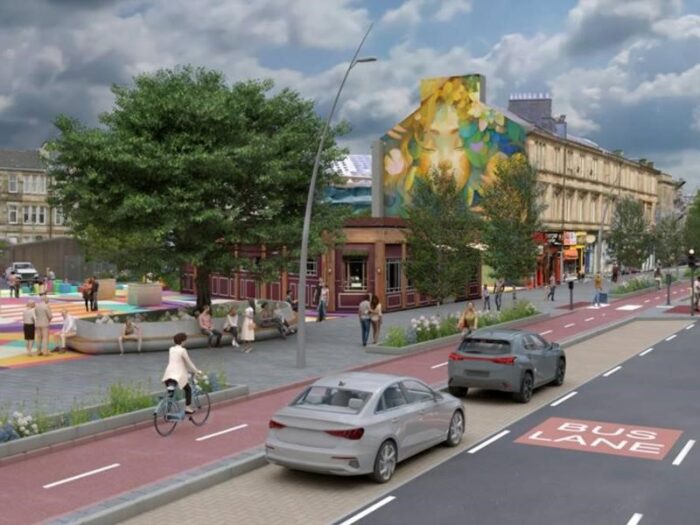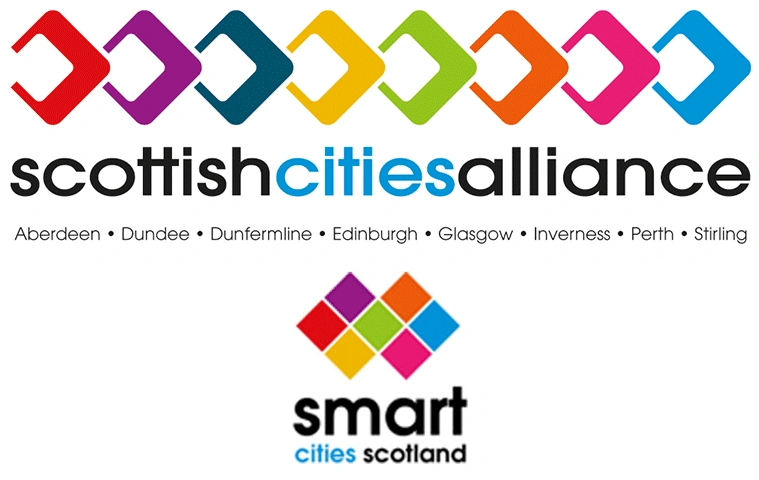
Credit: Glasgow City Council
A massive part of Scotland’s drive to improve people’s health and their environment is firmly focused on ditching the car for other ways of getting about – such as taking public transport, walking, or getting on your bike.
And that’s where Scotland’s Active Travel initiative comes in.
The plan, which will help cut carbon emissions on Scotland’s road to net zero, also focuses on 20-minute neighbourhoods, which means that people can meet most of their essential needs, such as leisure activities, getting to the doctor, work or school, by walking just 20 minutes away.
All the basics will essentially be on people’s doorsteps and it’s a plan that has been a hit in big cities such as Melbourne and Paris.
Now, we’re not in Australia or France. Our weather isn’t nearly as good, of course. But don’t worry! Exciting projects are taking shape in our cities that are worth shouting about.
In Glasgow, £3.6m is being invested in projects such as the 20km-long Govan City Network, which will see improved walking, cycling and public transport routes from Paisley Road West into the city centre. The new routes will also link to the new Govan to Partick bridge, which is currently being built across the Clyde.
And areas in the north of the city, such as Saracen Street, will also take a share of the cash to boost travel options as people are encouraged to get out and about without a car.
Councillor Angus Millar, City Convener for Climate and Transport, welcomed the funding for the projects. He said:
“This funding award will help take forward our ambitious sustainable transport plans for Glasgow, supporting the development of active travel infrastructure across the city.
“This investment will support the further development of our City Network in the Govan area, to deliver high quality cycleways and improved footways along main roads.”
It’s all part of an impressive master plan – Glasgow’s Transport Strategy has set a target of reducing car vehicle kilometres by at least 30% in support of the city’s ambition to become a net zero carbon city by 2030. Meanwhile in Aberdeen, the next step in the City Beachfront Masterplan has been approved which will see new parks and cycle lanes link the city centre to the beach area.
Council Co-Leader, Ian Yuill, said:
“Historically, Aberdeen beach was a magnet for holiday makers from all over Scotland and with a new influx of cruise ships as well as more Scots opting to take holidays here in Scotland, it is important that Aberdeen’s beachfront is as welcoming an attraction as it can be for local people and visitors alike.”
Meanwhile in Edinburgh, a major push will see thousands of lower kerbs installed to make it easier for cyclists to get around, with plans for new zebra crossings that give priority to those on two wheels or on foot, making it quicker and easier to get about the city and enjoy everything it has to offer.
Edinburgh is also committed to delivering a network of cycle routes that are within 400 metres of every home in the city. The routes are designed to make cyclists feel safe as they will be segregated from other traffic on main roads. The city is also rolling out more parking spaces for bicycles, which will make taking your bike into town a more attractive option.
Elsewhere, in Dundee people are being asked for their views on an active travel route that would link the city centre to the Kingsway via Lochee, giving priority to cyclists and pedestrians. Described as an “active freeway”, the concept aims to encourage people to make their journeys by walking, wheeling and cycling by providing active travel infrastructure on high-demand travel routes.
Kevin Cordell, the council’s cycling spokesman, said:
“The active freeway along the Lochee Road/Coupar Angus Road corridor will not only make a substantial contribution to the city’s health and wellbeing, it would help to achieve our wider climate commitments and further improve local air quality.”
